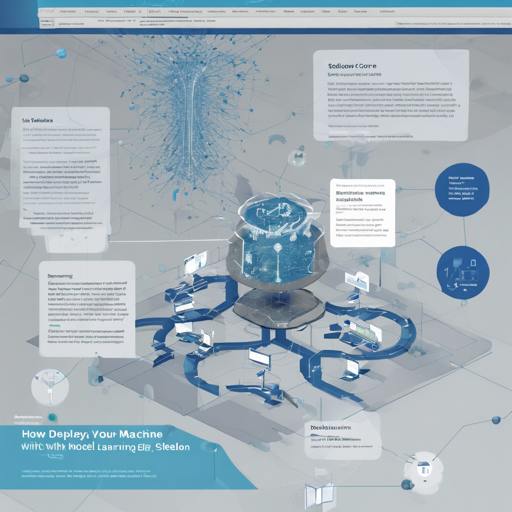Welcome to your ultimate guide for deploying machine learning models at scale using Seldon Core! This platform is designed to help you containerize and deploy your models seamlessly in Kubernetes, making it an industry-ready solution for machine learning applications.
What is Seldon Core?
Seldon Core is like a magic bridge connecting your machine learning model to the cloud. Just as a restaurant serves your favorite food, Seldon Core serves predictions from your ML models efficiently to end-users with various advanced features. With Seldon Core, not only can you deploy models with ease, but you also gain access to powerful analytics and monitoring capabilities.
Getting Started with Seldon Core
Follow these steps to kick off your journey with Seldon Core:
- Install Seldon Core: Begin by creating a namespace for your project and then install Seldon Core using Helm 3:
kubectl create namespace seldon-system
helm install seldon-core seldon-core-operator \
--repo https://storage.googleapis.com/seldon-charts \
--set usageMetrics.enabled=true \
--namespace seldon-system \
--set istio.enabled=true
# You can set ambassador instead with --set ambassador.enabled=truekubectl create namespace seldon
kubectl apply -f - << END
apiVersion: machinelearning.seldon.io/v1
kind: SeldonDeployment
metadata:
name: iris-model
namespace: seldon
spec:
name: iris
predictors:
- graph:
implementation: SKLEARN_SERVER
modelUri: gs://seldon-models/v1.19.0-dev/sklearn/iris
name: classifier
name: default
replicas: 1
ENDTroubleshooting Deployment Issues
If you encounter challenges during the deployment process, here are a few troubleshooting tips:
- Check your Kubernetes cluster’s health and ensure that Seldon Core components are running properly.
- Make sure the model URI is correctly specified and accessible from the deployed environment.
- Consult the logs for any errors in the Seldon Core dashboard.
- If problems persist, feel free to leave feedback on the Slack community and submit bugs or feature requests on the GitHub repository.
- For more insights, updates, or to collaborate on AI development projects, stay connected with fxis.ai.
Advanced Features
Seldon Core provides a robust set of features out of the box that can enhance your deployment, including:
- Scalability to thousands of models
- Advanced logging and metrics support
- Model explainability tools
- Outlier detection and monitoring
Conclusion
By following the above steps, you will be well on your way to deploying ML models effectively using Seldon Core. This cutting-edge technology empowers organizations like yours to harness their ML capabilities without the hassle of manual configurations.
At fxis.ai, we believe that such advancements are crucial for the future of AI, as they enable more comprehensive and effective solutions. Our team is continually exploring new methodologies to push the envelope in artificial intelligence, ensuring that our clients benefit from the latest technological innovations.
You can dive deeper into Seldon Core with their documentation and keep experimenting!

